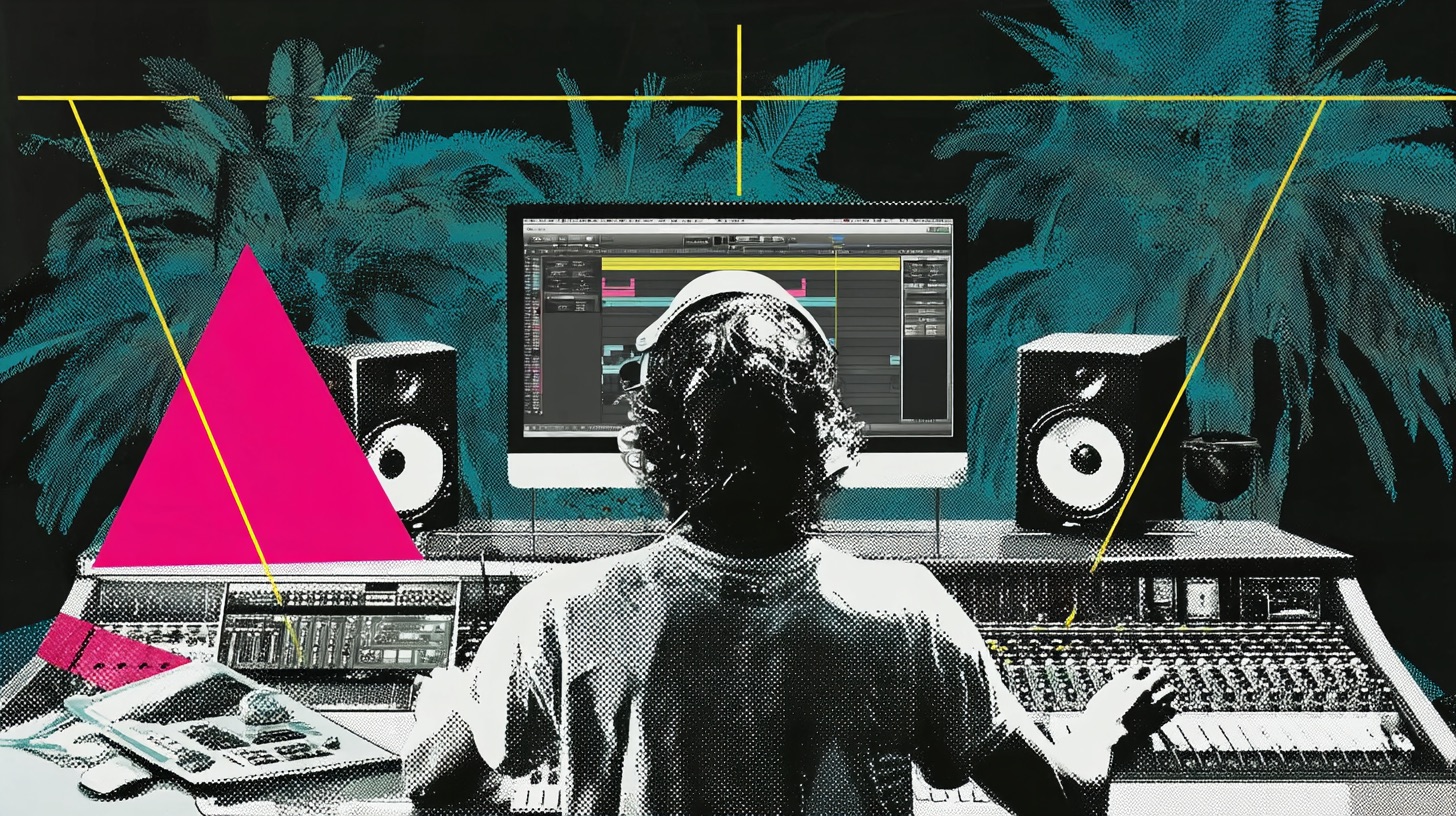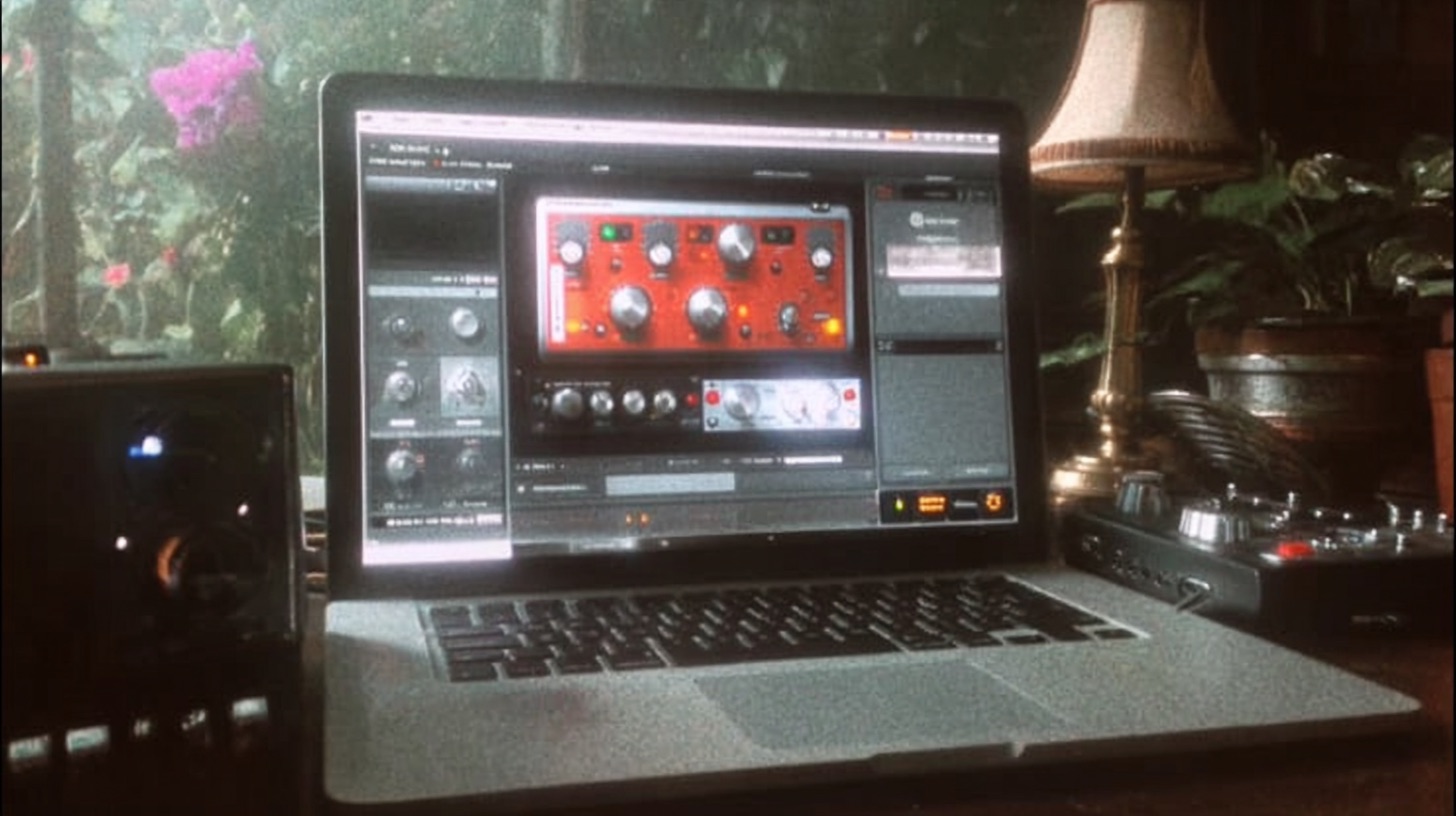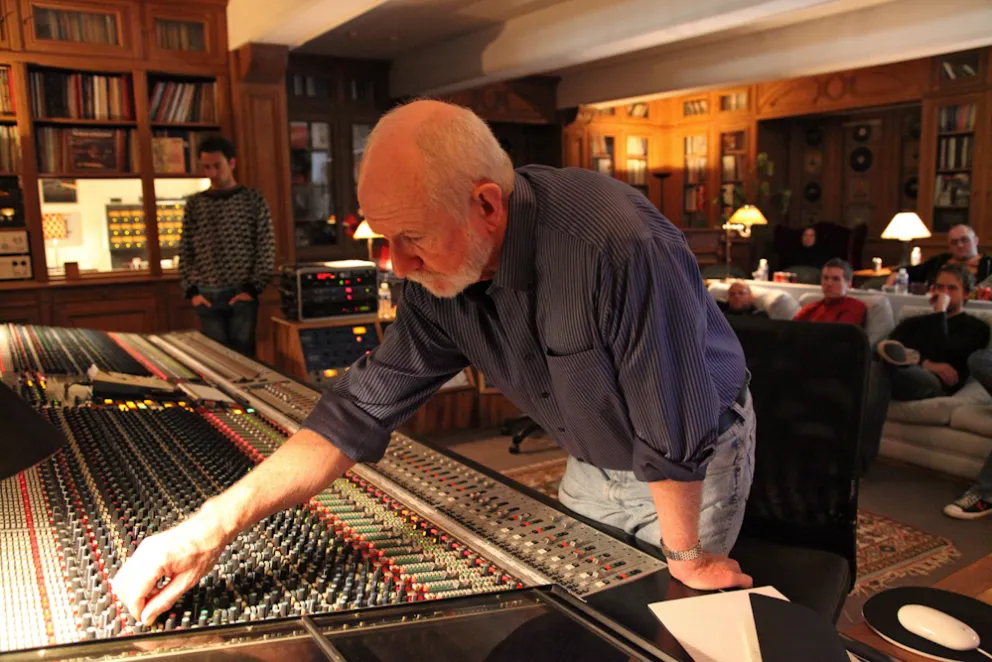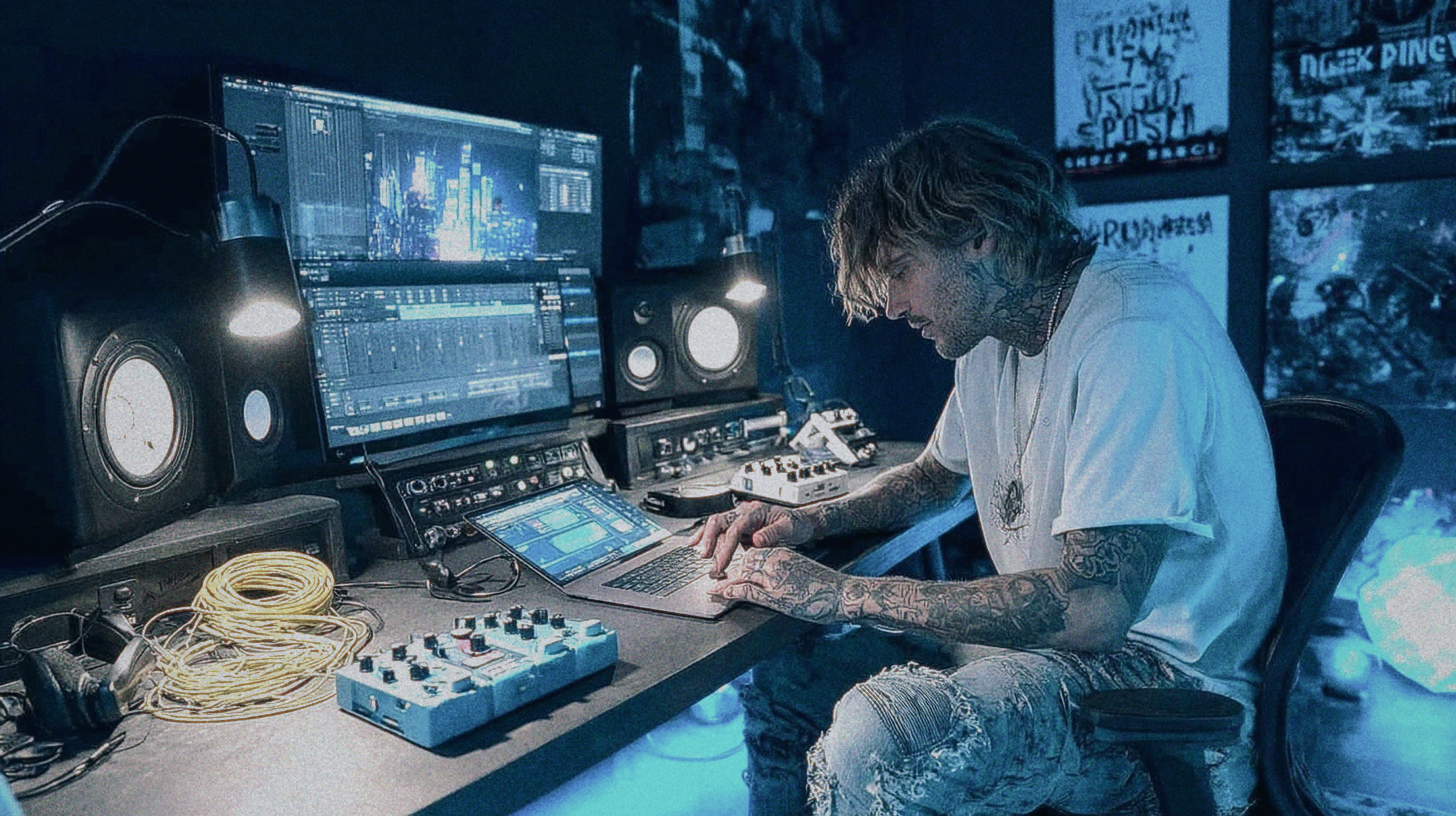
Melodyne: Next-Level Vocal Tuning for Metal Producers
Nail The Mix Staff
In modern metal, whether it’s guttural lows, soaring cleans, or razor-sharp screams, vocals need to be dialed in. We’re talking precision, power, and clarity that can stand up to a wall of downtuned guitars and blast beats. While a killer performance is paramount, even the best vocal takes can benefit from some polish. That’s where Celemony Melodyne steps in, and frankly, it’s become an indispensable tool for producers aiming for that pro-level sound.
The game has changed. Thanks to the internet, your music can reach a global audience of metalheads. But that also means the competition is fierce, and listener expectations are sky-high. They’re used to hearing perfectly produced tracks, and tools like Melodyne are a huge part of how those sounds are achieved. You don’t need a million-dollar studio anymore, but you do need the skills and the right software to compete. Melodyne isn’t about “fixing” a bad performance; it’s about refining a good one into something exceptional.
What Makes Melodyne a Game-Changer for Metal Vocals?
So, what’s the big deal with Melodyne? Why not just slap on any old pitch corrector? Melodyne is a different beast altogether. Its magic lies in its Direct Note Access (DNA) technology (available in Editor and Studio versions). This allows Melodyne to not just identify pitch, but to “see” individual notes within chords and even polyphonic audio. While vocals are typically monophonic, this underlying tech means Melodyne analyzes and allows you to manipulate audio with an incredible level of detail and transparency.
Here’s why it’s a killer app for metal:
- Transparency: When used correctly, Melodyne can make significant pitch adjustments without that dreaded “Auto-Tune effect” (unless you want it!). For metal, where natural aggression is key, this transparency is golden.
- Deep Editing: You’re not just selecting a key and letting the plugin do its thing. You’re visually working with “blobs” representing notes. You can tweak pitch, vibrato, pitch drift, timing, note length, formants, and amplitude of individual notes or even parts of notes.
- Workflow: With ARA (Audio Random Access) integration in DAWs like Studio One, Cubase, Reaper, and Logic Pro X, Melodyne can feel like part of the DAW itself, making the editing process much smoother than the old “transfer” methods (though that still works fine in DAWs like Pro Tools).
It’s this surgical control that lets you polish metal vocals to a mirror shine, ensuring every growl hits with impact and every clean line soars perfectly in tune.
Melodyne vs. The Competition: Choosing Your Tuning Weapon
Melodyne isn’t the only player in the vocal tuning game. Let’s see how it stacks up against some other popular options:
- Antares Auto-Tune Pro: The OG. Auto-Tune is iconic for “that sound,” but Auto-Tune Pro is also a very capable manual correction tool. It has its own character, often a bit more “processed” sounding, which can be cool for certain modern metal styles. Its graph mode is powerful, but Melodyne’s note-based approach often feels more intuitive for detailed, natural-sounding edits.
- Waves Tune Real-Time / Waves Tune: Waves Tune Real-Time is fantastic for, well, real-time correction, either live or for quick fixes during tracking. The full Waves Tune offers more detailed graphic editing. They’re solid tools, but for really intricate, transparent work on complex vocal lines or gutturals, Melodyne often provides a more nuanced toolkit and arguably more natural-sounding algorithms, especially with larger pitch shifts.
- DAW Built-in Tools (Logic Pro X Flex Pitch, Cubase VariAudio, etc.): These are incredibly convenient and have gotten seriously good. For many tasks, they’re more than enough. However, producers often turn to Melodyne when they need that extra 10% of control, a different flavor of algorithm, or its unique tools like formant editing or polyphonic capabilities (even if just for the tech behind its mono analysis).
So, when do you reach for Melodyne specifically?
If you need to meticulously sculpt a vocal, fix subtle intonation issues in a brutal scream without losing its character, perfectly align complex harmonies, or even perform creative sound design by drastically altering formants or melody lines, Melodyne’s depth is hard to beat. It excels where absolute transparency and granular control are paramount.
Getting Surgical: Actionable Melodyne Techniques for Brutal Vocals
Okay, theory’s cool, but how do you actually use Melodyne to make your metal vocals slay?
H3: Taming Wild Screams and Growls
Extreme vocals are, by nature, aggressive and sometimes harmonically chaotic. Melodyne helps you retain that raw power while ensuring musicality.
- Pitch Center & Drift: Use the Pitch Tool to correct the overall pitch of a note. For screams that waver, the Pitch Modulation Tool (pencil icon) can smooth out excessive vibrato or unevenness, while the Pitch Drift Tool (wavy line icon) can correct notes that start or end sharp or flat. Don’t iron everything flat, though! Some natural variation is good. Aim for controlled aggression. Once the performance is tightened up, you can add even more aggression and presence by mixing in some parallel distortion.
- Pro Tip: Zoom in on the tail end of a sustained scream. See it drooping flat? Gently pull it up with the Pitch Tool or smooth the drift.
- Note Separation: Sometimes a guttural or scream can be misinterpreted as one long note with wobbles. Use the Note Separation Tool (the vertical cutter) to define individual syllables or intended notes within the phrase. This gives you much finer control.
- Formant Tweaking (Subtly!): The Formant Tool can shift the resonant frequencies of a vocal. For metal, a very slight downward formant shift on a scream can sometimes add a touch more perceived depth or aggression, or a slight upward shift for more cut. Be careful – too much and you’re in chipmunk or Darth Vader territory. Listen in context!
H3: Crafting Perfect Harmonies
Layered vocals and harmonies are huge in many metal subgenres. Melodyne is your best friend here.
- Tightening Stacks: Even if your vocalist nails multiple takes, tiny pitch and timing discrepancies can make harmonies sound messy. Melodyne lets you lock them in perfectly. You can even copy a melody line from one track, paste it to another, and then adjust the pitch to create a new harmony part.
- Vibrato Matching: If you have multiple harmony layers, inconsistent vibrato can be distracting. Use the Pitch Modulation tool to make the vibrato characteristics more cohesive across layers.
H3: Beyond Pitch: Rhythmic Editing and Sibilance Control
Melodyne isn’t just for pitch. Its timing tools are incredibly powerful.
- Timing Adjustments: Use the Timing Tool (often accessed by grabbing the start or end of blobs) to stretch or compress notes, ensuring every syllable locks in with the kick and snare or the guitar chugs. This can dramatically tighten up a vocal performance.
- Example: Is the vocalist consistently landing slightly behind the beat? Select all notes and nudge them forward. Or, go syllable by syllable for ultimate precision.
- Sibilance Control (Amplitude Tool): While a dedicated de-esser is still often necessary, Melodyne’s Amplitude Tool can be used to manually tame harsh sibilance on “s,” “t,” or “f” sounds. Zoom in, find the sibilant part of the waveform within the blob, and gently reduce its volume. This can be more transparent than a broadband de-esser. Higher Melodyne versions (Editor/Studio) have dedicated sibilant detection.
Once your vocals are perfectly tuned and timed, shaping them with precise EQ is the next crucial step to make them sit in the mix.
The Modern Metal Producer: Why Embracing Tech Like Melodyne is Non-Negotiable
As Eyal Levi often emphasizes, it’s an amazing time to be a metal musician or producer. The internet means your potential audience is massive, and recording technology has democratized access to pro-quality tools. You can literally craft a world-class record in your bedroom… if you put in the work and embrace the tech.
The bar for production quality is insanely high. Fans are constantly exposed to perfectly polished, meticulously edited music. Tools like Melodyne, drum sample replacement (think Slate Trigger or Superior Drummer 3), and amp modelers (like the Kemper Profiler or Neural DSP plugins) aren’t “cheating.” They’re standard kit for achieving the modern metal sound.
Think about it: many bands who say they want an “all-natural” sound are often referencing records that are, in fact, heavily edited and polished using these exact tools. They want the feeling of raw power, but with the precision and impact of modern production. Melodyne helps you bridge that gap. It’s about taking a great performance and making it technically flawless without sacrificing the soul. If you’re not keeping up with these advancements, you risk your tracks sounding dated or amateurish next to the competition.
And after tuning and timing, controlling those aggressive vocal dynamics with powerful compression techniques will ensure they hit hard and stay present.
Integrating Melodyne into Your Workflow
How you use Melodyne can depend on your DAW and personal preference:
- ARA Integration: If your DAW supports ARA 2 (like Logic Pro X, Studio One, Cubase, Reaper), this is usually the slickest way. Melodyne opens directly on the audio track, and changes are non-destructive and instant. It feels like a native part of your DAW.
- Plugin Transfer: In DAWs like Pro Tools (which doesn’t fully support ARA for Melodyne in the same way yet), you’ll use Melodyne as an AudioSuite plugin or insert it on a track and “transfer” the audio into Melodyne for editing. It’s a few extra clicks but gets the job done.
Workflow Tips:
- Placement in Chain: Generally, tune before heavy time-based effects (delay, reverb) but after initial cleanup like de-noising or surgical EQ to remove problematic resonances. Some light compression beforehand can also help Melodyne track notes more consistently.
- Context is King: Constantly A/B your changes and listen to the vocals in the mix. What sounds good in solo might be too much (or too little) with everything else playing.
- Don’t Overdo It: The goal is usually transparency. Avoid making notes perfectly flat unless it’s a specific stylistic choice. Retain some natural human variation.
- Commit When Ready: Once you’re happy with your edits, consider rendering/printing the Melodyne’d track to audio. This saves CPU and locks in your decisions (though with ARA, you can often leave it active).
- Reference Tracks: Listen to your favorite metal productions. How do the vocals sound? Are they super tight and perfectly pitched, or is there a bit more looseness? Use these as a guide.
Nail The Mix: See How The Pros Wield Melodyne
Learning these techniques on your own is one thing. But watching seasoned metal producers—the ones mixing records for bands like Periphery, Gojira, or Meshuggah—apply these tools in real-time, on actual session files? That’s a whole different level of education.
At Nail The Mix, you get exactly that. Every month, you get the multitracks from a massive metal song and watch the original producer mix it from scratch, explaining every plugin choice, every fader move, and every decision—including how they approach vocal tuning with tools like Melodyne. It’s not just about learning which buttons to press; it’s about understanding the why behind crafting a pro-level metal mix. You’ll see how these concepts are applied to achieve that polished, powerful sound that defines modern metal.
Want to go beyond presets and truly unlock your sound for mixing modern metal? Seeing how the best in the business do it is an incredible shortcut.
The Final Word: Tune In, Turn Up
Melodyne is more than just a pitch correction plugin; it’s a deep, powerful audio editing environment that can elevate your metal vocal productions from good to phenomenal. In an era where sonic excellence is not just desired but expected, mastering tools like Melodyne is essential for any serious metal producer.
Embrace the technology, put in the practice, and start delivering vocals that don’t just sit in the mix, but dominate it. Your tracks (and your listeners) will thank you.
Get a new set of multi-tracks every month from a world-class artist, a livestream with the producer who mixed it, 100+ tutorials, our exclusive plugins and more
Get Started for $1






